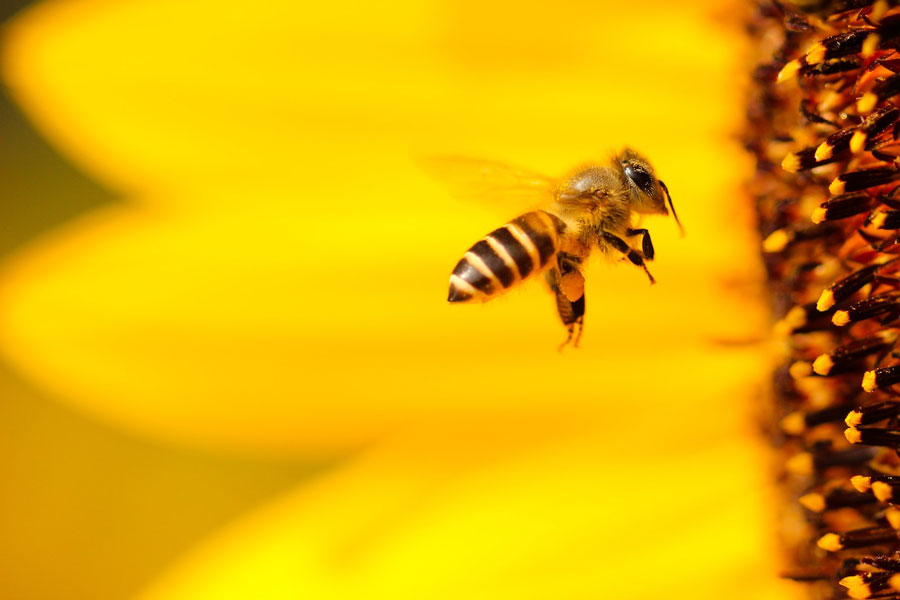Quantifying objects: bees recognize that six is more than four
A new study at the University of Cologne proves that insects can perform basic numerical cognition tasks. Their neuronal network can also be used to perform successful machine learning

Photo by Boris Smokrovic on Unsplash
/University of Cologne/ Writing in iScience, zoologists have shown that insects have the cognitive abilities to perform so called numerosity estimation, allowing them to solve simple mathematical problems. Zoologist Professor Dr Martin Paul Nawrot and doctoral student Hannes Rapp from the ‘Computational Systems Neuroscience’ research group at the University of Cologne demonstrated these abilities in a computational model inspired by the honeybee.
‘Experiments showed that insects such as honeybees can actually “count” up to a certain number of objects. For example, bees were able to compare sets of objects and evaluate whether they were the same size or whether one set was larger than the other’, said Hannes Rapp, explaining the underlying question of what is known as numerical cognition. For example, the bee recognized that six diamonds are more than four circles.
So far, it has been unclear how the neuronal network for this cognitive ability is constructed. Earlier theoretical models had assumed a firmly implemented circular circuit with four involved neurons for the four arithmetical operations ‘equal to’, ‘zero’, ‘more than’ and ‘less than’, explained Professor Nawrot. ‘However, our computer model showed that not four, but only one neuron is sufficient. The action potential of a single neuron varies depending on the math problem – and this can be trained on the neuron. As a result, the researchers identified a comparatively simple model with which a neural network can learn to solve numerical cognition tasks.
According to Nawrot, this model also helps the neural networks of an artificial intelligence to learn: ‘A lot of money has already been invested into training artificial neural networks to visually recognize the number of objects. Deep learning methods in particular enable counting by the explicit or implicit recognition of several relevant objects within a static scene’, Nawrot added. ‘However, these model classes are expensive because they usually have to be trained on a very large number of patterns in the millions and often require cloud computing clusters. Our honeybee-inspired approach with a simple model and learning algorithm reduces this effort many times over.’
Original publication
Numerical Cognition Based on Precise Counting with a Single Spiking Neuron. doi: https://doi.org/10.1016/j.isci.2020.100852




